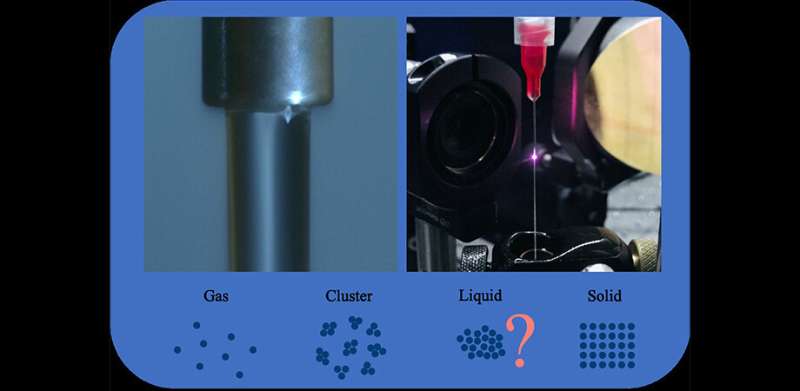Making terahertz waves: Why liquids prefer long optical pulses

Laser-induced ionization in matter—gas, cluster, liquid, and solid—occurs when a laser pulse with sufficient intensity is focused into a target material, creating electrons and ions through nonlinear processes of laser-matter interaction. Photoionization is an effective way to generate transient currents and electromagnetic radiation covering the spectrum from microwaves to X-rays.
In the terahertz (THz) frequency range, laser-induced air plasma has become one of the most popular THz sources in research labs. THZ generation from liquid water—long considered impossible—has been successfully demonstrated, with particular success from laser pulse repetitions targeting flowing liquid, so the chaos caused by the previous pulse does not influence the next.
Professor Xi-Cheng Zhang's group at University of Rochester's Institute of Optics conducts leading-edge research in THz wave generation from liquid water. They find that THz wave generation from ionized liquids involves photoionization processes that differ significantly from those of air or other gases. They discuss these differences in detail in a recent article published in Advanced Photonics.
Zhang's group observes that in gas, the shortest pulse always generates the strongest THz field, but in liquids, longer pulse duration offers stronger THz emission. By calculating the electron density, they find that the longer pulse duration generates more electrons in liquid. According to their observations, this phenomenon is caused by the collision of electrons, which plays an important role in the ionization process. For gases, the lifetime of electrons is always longer than the pulse duration, so the collision effect is generally not considered.
The insight illuminates the influence of optical pulse duration on laser-induced ionization in THz wave generation and advances the development of liquid water THz sources, rich in potential applications and opportunities.
More information: Preference of subpicosecond laser pulses for terahertz wave generation from liquids Advanced Photonics, 2(1), 015001 (2020). DOI: 10.1117/1.AP.2.1.015001
Provided by SPIE





















